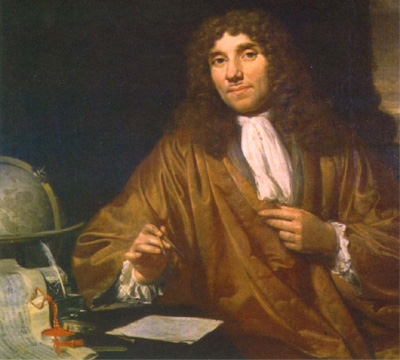Happy Birthday Antonie van Leeuwenhoek
October 25, 2010
Happy Birthday Antonie van Leeuwenhoek
Born: October 24, 1632
4 Reasons to love van Leeuwenhoek (besides the fact that he discovered bacteria, protozoa, striated muscle, red blood cells, circulation, and sperm):
1. Apparently “Leeuwenhoek” was impossible for the Royal Society to spell. Between 1673 and 1723 papers were published by: Leewenhoecks, Leewenhoeck, Leeuwenhoeck, Leuvenhook, Leuwenhoeck, Leuwenhoek, Lewenhoek, Lewen-Hoek, Lewuenhoek,, Lewenhock, Leuwenhock, and, finally, Leeuwenhoek.
2. “Animalcule” might just be the greatest word ever. As the first person to observe singe-celled organisms, Leeuwenhoek had to name them – and he went with ANIMALCULES.
3. He made his own microscopes and ground his own lenses (nearly 500 have been documented). Having cornered the market on quickly producing quality lenses, he refused to share the process by which they were made; he even declined to share his best microscopes with the Queen Mary when she visited Delft. Leeuwenhoek’s unrivaled status as the leading microscopist of his day, while dependent up on his curious mind and relentless work ethic, must have been due in large part to the superiority of his jealously guarded tools.
4. In addition to discovering new forms of life, Leeuwenhoek also served as the Delft Wine-Gauger (official wine and beer inspector/tax collector for the local pubs). He also served as a Chamberlain to the Sheriffs and was certified as a surveyor. His formal education consisted of an apprenticeship as a linen-draper, a trade that made him one of the prosperous tradesmen in the city. Leeuwenhoek was never employed as a scientist or monetarily compensated for this scientific work.
References:
Hall, A. R. “The Leeuwenhoek Lecture, 1988. Antoni van Leeuwenhoek 1632-1723.” Notes and Records of the Royal Society of London. 1988, 43:249-273.
De Kruif, P. The Microbe Hunters. Harcourt, Brace and Company, New York. 1926.
Search. Try. Find. Impart. Contribute.
